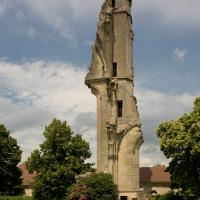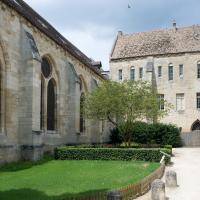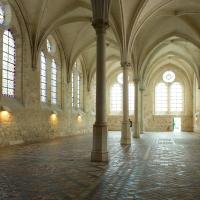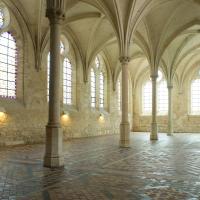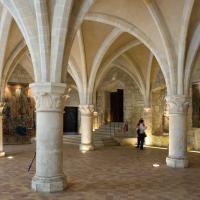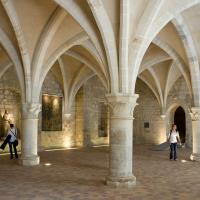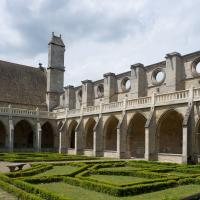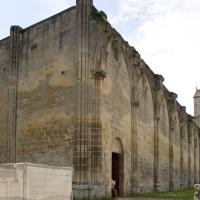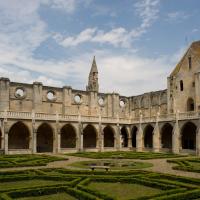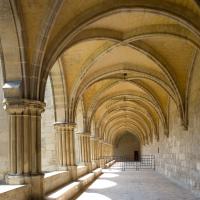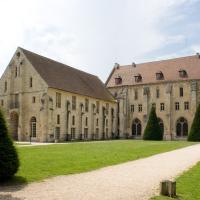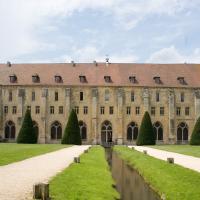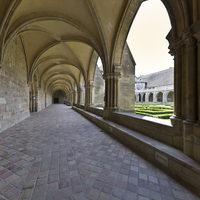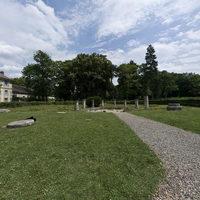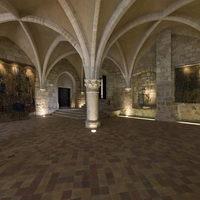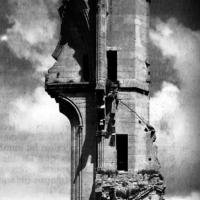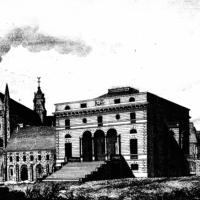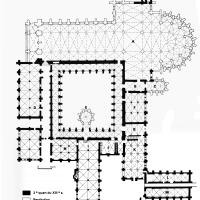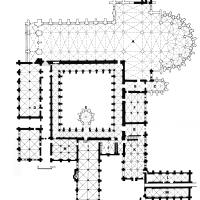Images
VR Tour
Notes
History
Soon before his death King Louis VIII left a substantial sum for the foundation of a Victorine monastery (d 1226). Louis IX, however, presumably under the guidance of his mother Blanche of Castille chose a Cistercian foundation and the great church was begun in the 1220?s (late) mimicking that of Longpont. The consecration of Royaumont took place in 1228. In 1791 the abbey was transformed into a cotton mill. Acquired by the Gouïn family at the beginning of the 20th century the site remains a private institution.
Date
Begun ca. 1228
Plan
Of the great church of Royaumont only vestiges remain: the wall of the south nave aisle and the stair case of the north transept façade. Fortunately a substantial number of monastic buildings remain intact although they are much rebuilt. There was originally a long nave intersected by deep transept terminated in the east by a short chevet with double aisle ringed by an ambulatory and seven shallow polygonal chapels of even depth.
Elevation
The elevation may be deduced by the extant remains which indicated that there was a three-storey elevation with arcade supported on columns, a blind triforium and short clerestory.
Significance
Despite the famous thesis of Robert Branner King Louis the IX built few churches and there is little evidence that he was interested in architectural form or style. However he was enthusiastic in the Royaumont community which he frequently visited and performed symbolic acts of labour with the monks. The church is significant in that it belongs to the group of ?cathedral? type of monastic church including Longpont, Ourscamp, and Celle. Royaumont provided an important architectural prototype for the cathedrals of Beauvais and Amiens. The chevet plan with seven shallow chapels points to S-Denis and may have carried royal significance.
Location
Bibliography
Belhoste, J.-F.; Le Gonidec, N., Royaumont au XIXe siècle: les metamorphoses d'une abbaye, Grâne, 2008
Branner, R., Saint Louis and the Court Style, London, 1965
Champollion, H.; Lapostolle, C., L'abbaye de Royaumont, Rennes, 1995
Dammé, C.-J.; Goüin, H.; Lachenaud, J.-P., Royaumont: Mons regalis, s.i, 1990
Gouïn, H., Abbaye de Royaumont, Paris, ?
?Lauer, P., "L'abbaye de Royaumont," Bulletin monumental, 72, 1908, 215-268?
Le Pogam, P.-Y., "Le tombeau de philippe Dagobert: un monument royal chez les moines blancs", Bulletin Monumental, vol. 168:2, 2010, pp 133-148
Raynaud, C.; Wabont, M., "Réseaux hydrauliques de l'abbaye cistercienne de Royaumont", L'innovation technique au Moyen Age. Actes du Vie congers international d'archéologie médiévale, 1-5 octobre 1996, Dijon- Mont Beuvray- Chenôve- Le Creusot- Montbard, Ed. Patrice Beck, Paris, 1998, pp 71-72
Schroder, "Royaumont oder Köln? Zum Problem der Abteilung der gotischen Zisterzienser Abteikirche Altenberg," Kölner Domblatt, 42, 1977, 209-242.


